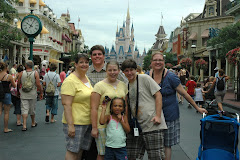Reading Log, Nathan, Chap. 3
Summary:
Nathan expands on the theme of community and diversity begun near the end of chapter two, first reporting the stress placed upon community by the academy at large, then as it is encompassed by structured attempts within AnyU itself. Activities intended to boost community, such as freshman seminar, shared reading of a common book assignment, and dorm-initiated activities (movie night, talent show, etc.) are related - all of which are failures in their attempt to engender a shared experience and sense of community. The author ascribes these failures to a thwarted sense of autonomy on the part of the student and an over abundant "proliferation of choices" that are poorly attended and therefore expanded in an effort to garner more success - an ever widening circle of disenfranchisment that is self perpetuating in its desperate attempt to create unity.
Nathan recounts an attempt to establish rules known as a "community living agreement" from among suggestions offered rather half-heartedly by the hall residents at the behest of the RA. She uses the "agreement" to which no one actually agreed, and including rules that could not be enforced, as exemplary of the current status of community in US institutions of higher education. She sees the University as a place where being in community depends upon private will and the decision to be included, rather than a place that by design or nature creates community on its own.
The exercise of free will is also seen in the way that dorms themselves are now constructed. Nathan reports that collective living arrangements have given way to condo-like arrangements that do not lend themselves to community in the same way as traditional, shared spaces have done in the past. Areas intended as social spaces are now used as retreats from the more noisy gatherings taking place in individual rooms, a reverse of the traditionally envisioned functions of both sites.
Personal networks form the basis of community at AnyU, networks that revolve around shared interests and are often formed before the student enters college or during the earliest weeks on campus. These networks differ person by person, and while they may share members, they are comprised of individuals central to the person describing them so that they form overlapping groups. It is interesting to note that Nathan seems to observe and remain a fringe member of dorm society - to the point that she must use interviews to completely understand the dynamic, rather than experiencing it firsthand, despite having gone "under cover" to do so.
Nathan uses some telling phrases in describing her study, phrases that illustrate the disconnect she has from the students she is studying. Statements such as "Students, I imagine, would see it..." and "in my day..." point out the place where Nathan exists within the freshman world - outside looking in, imagining rather than really experiencing anew, comparing past experience of the known with that of students who are truly seeing the university world for the first time.
Because she found student social networks tended to consist of members of the same ethnicity, despite NSSE findings to the contrary, Nathan undertook the last project described in this chapter, a mini-study of student dining. Her observations of student preferences for shared dining tables tended to corroborate her findings regarding diversity in the dorms - white students primarily socialized with white students, ethnic minorities with other ethnic minorities.
Reflection:
Certainly Nathan's age and life experience conspire to keep her a perpetual outsider, even as she struggles to understand and confront university life in new ways, but it is especially her prior knowledge, and constant comparison of, the university with which she is well-versed that keep her an observer/listener rather than an included participant. She cannot become invisible enough to reach into the student experience - she will remain a sort of novelty, perhaps even a mascot, an "Other" inside the walls. While students may find her amusing, and game for their activities, her very willingness to attend every event and embrace each new attempt at community building marks her as someone who is not part of the gang - and can never be.
I continue to see this book as fascinating, a good read, and offering a number of insights into what it feels like to be a new student - disoriented, uncomfortable, disenfranchised - that serve to underscore the divide between the university writ large and the student. For this reason alone it deserves its place on the academic shelf. However, it is, I think a book that has limitations that must be acknowledged and taken into account when putting its findings into practice.
Tuesday, February 17, 2009
Subscribe to:
Post Comments (Atom)

No comments:
Post a Comment